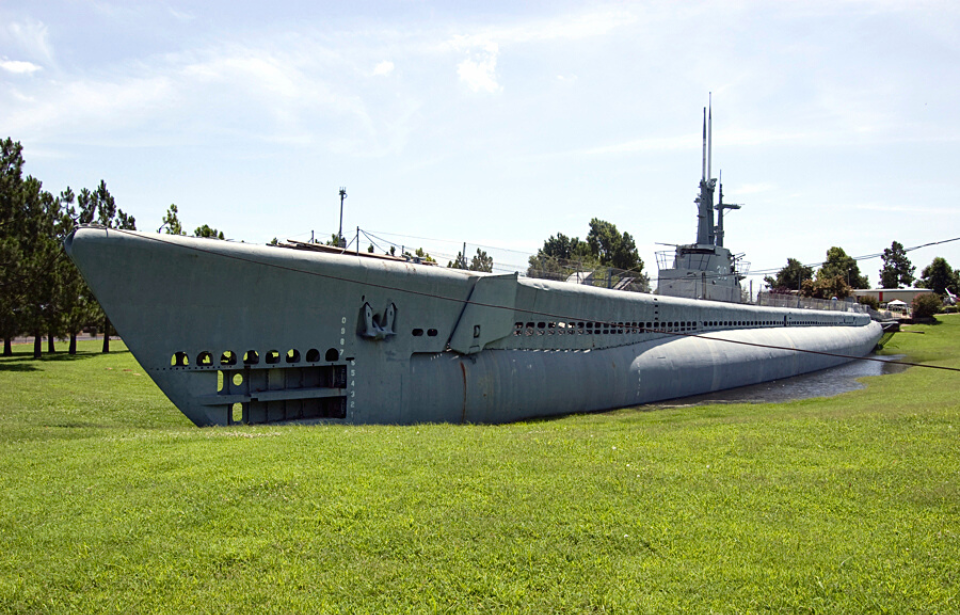The USS Batfish (SS-310) is a Balao-class submarine that holds the US Navy record for sinking three enemy ships in three days. After serving the military, she was retired and was purchased by veterans in Oklahoma, who transformed the underwater vessel into a memorial and museum.
The USS Batfish enters the Second World War
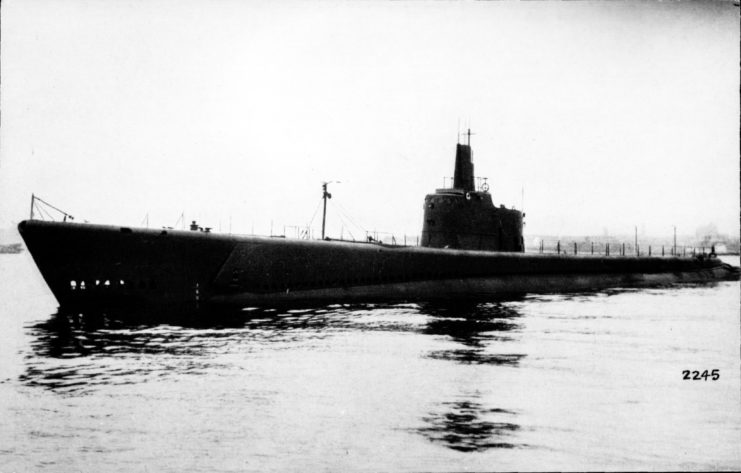
Two years after the Japanese attack on Pearl Harbor, the USS Batfish conducted her first patrol. On January 19, 1944, the submarine participated in her first naval engagement after encountering an enemy convoy of three large ships, one medium ship and two escorts. Batfish held her own and sunk two of the large vessels, beginning a battle record that earned her the nickname, “Sub Killer.”
Onboard the Batfish were 10 torpedo tubes and numerous on-deck guns that made her a lethal submarine. During her fourth war patrol, she damaged the Japanese destroyer Samidare so much that the enemy deemed her unsalvageable, leading them to destroy the ship with demolition charges.
In total, Batfish fired 71 torpedos during combat, with 24 hitting their intended targets.
The USS Batfish sets a US Navy record
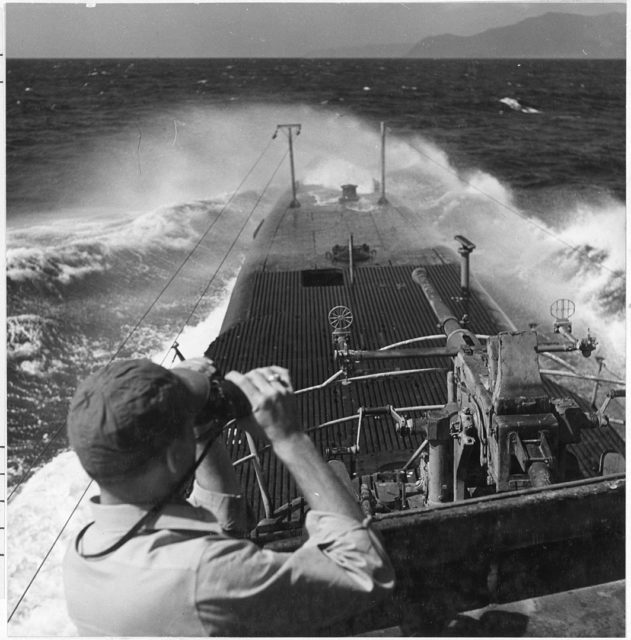
It was on her sixth patrol that the USS Batfish set a naval record. On February 10, 1944, she sunk the Japanese submarine Ro-55, just a few minutes after midnight. The next day, Cmdr. John Kerr Fyfe noticed another Japanese vessel on the radar and fired four torpedoes, three of which struck the Ro-112 and sunk it. Not even 24 hours later, Batfish sunk the Ro-113 using three more torpedoes.
To this day, she is the only submarine in US history to sink three enemy ships in a 76-hour period. Between 1943-45, Batfish‘s crew of 80 were able to sink 14 Japanese vessels and damage an additional three. Following the Japanese surrender, the submarine was decommissioned and used as a training vessel. She was reactivated, then deactivated, during the Korean War, and was struck from the Naval Vessel Registry in 1969.
For their efforts, Batfish‘s crew was awarded 10 Bronze Star Medals, nine Battle Stars, four Silver Stars, one Navy Cross and one Presidential Unit Citation.
Veterans search for the right submarine
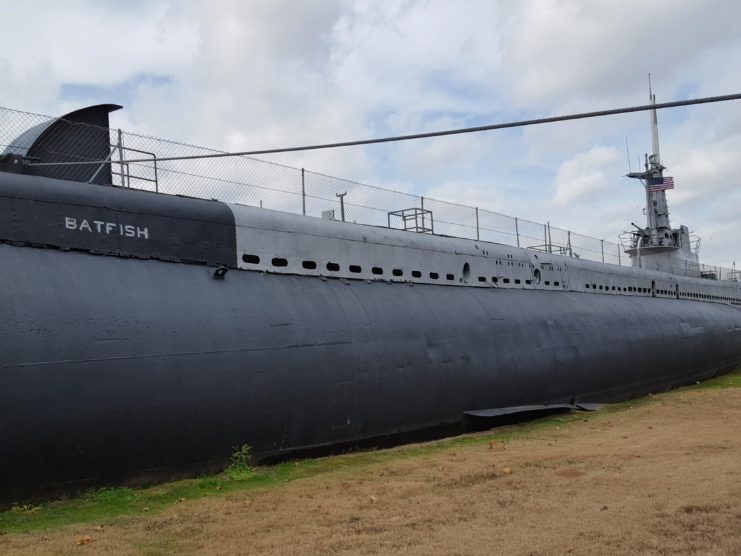
As early as 1962, the Oklahoma chapter of the United States Submarine Veterans, Inc. were in search of a submarine they could preserve and transform into a memorial. They had many candidates in mind. The USS Piranha (SS-389) proudly boasted five battle stars and six combat patrols, while the USS Sea Dog (SS-401) sailed five. They even considered the USS Cavalla (SS-244), known for sinking the Japanese aircraft carrier Shōkaku, which was involved in the attack on Pearl Habor.
The veterans chose the USS Batfish for her incredible battle record and the condition she was in at the time. Piranha and Sea Dog wound up scrapped, while Cavalla was turned into a museum at Seawolf Park in Galveston, Texas. Once they’d announced she would serve as their memorial, US Congress quickly approved the transfer of the submarine from the Navy to Oklahoma.
Moving the USS Batfish to a soybean field
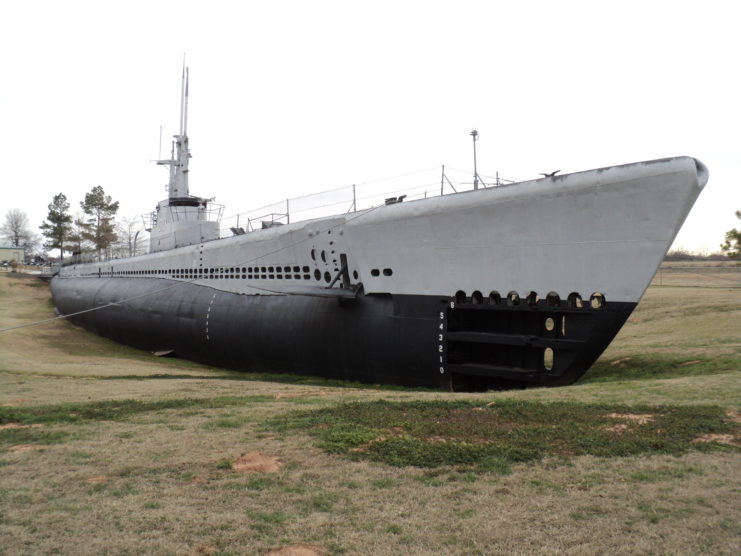
The Muskogee City-County Trust Port Authority donated about five acres of what was previously a riverfront soybean field to serve as the display area for the USS Batfish. The next step was to transport the submarine from her port in New Orleans to the Port of Muskogee.
This was no easy feat. It took nearly seven weeks to transfer Batfish from New Orleans to Oklahoma. Batfish was towed up the Mississippi River and, along the way, the river had to be lowered by three feet to squeeze the submarine under a bridge. Once she’d reached the Arkansas River, she was was moored close to the spot she’d call home, where she remained until a flood helped reposition her.
When the flood waters had subsided, Batfish was officially stationed and ready to welcome the public.
The USS Batfish becomes a museum

More from us: Why was the German Cruiser Deutschland’s Name Changed During WWII?
On Memorial Day 1973, the USS Batfish memorial and a neighboring museum were opened to the public. The submarine was restored by the veterans and volunteers, who reinstalled as much as they could, down to the last detail. They even hung pin-up girl posters on the walls for full authenticity.
By the end of the 20th century, Batfish was one of 20 World War II-era submarines on public display in the United States.
